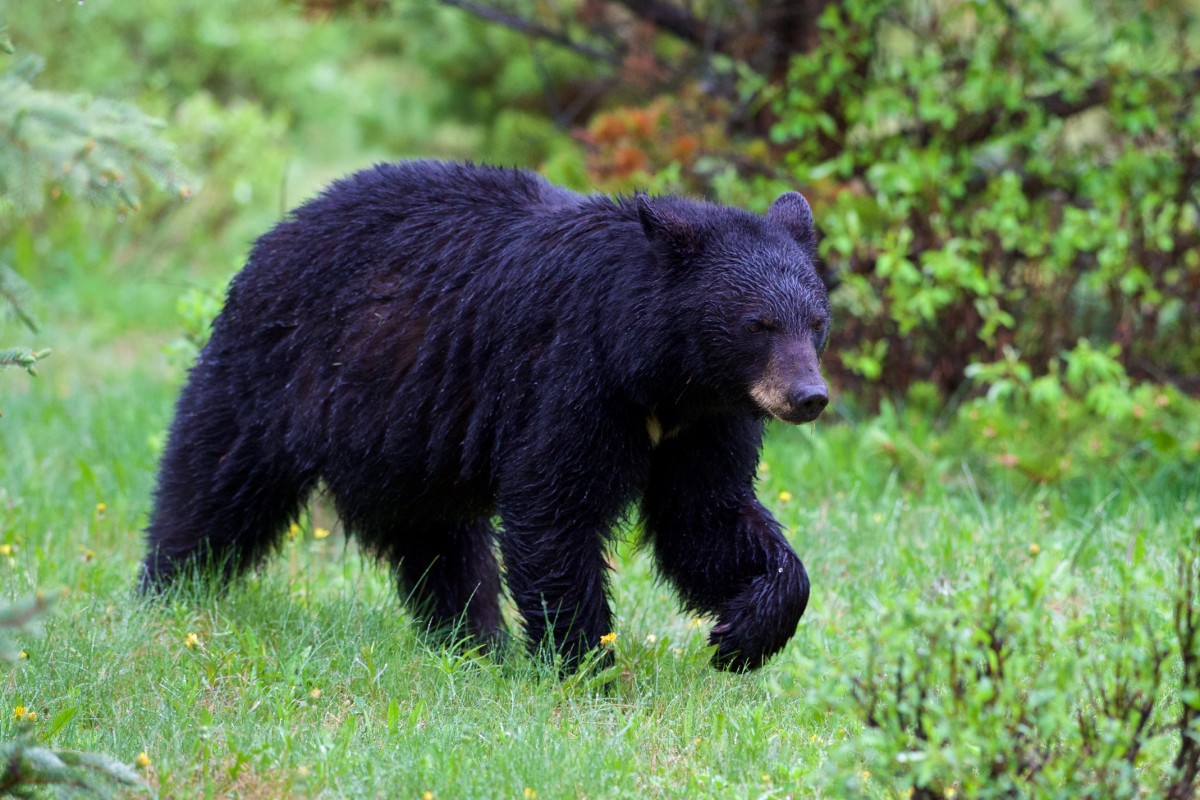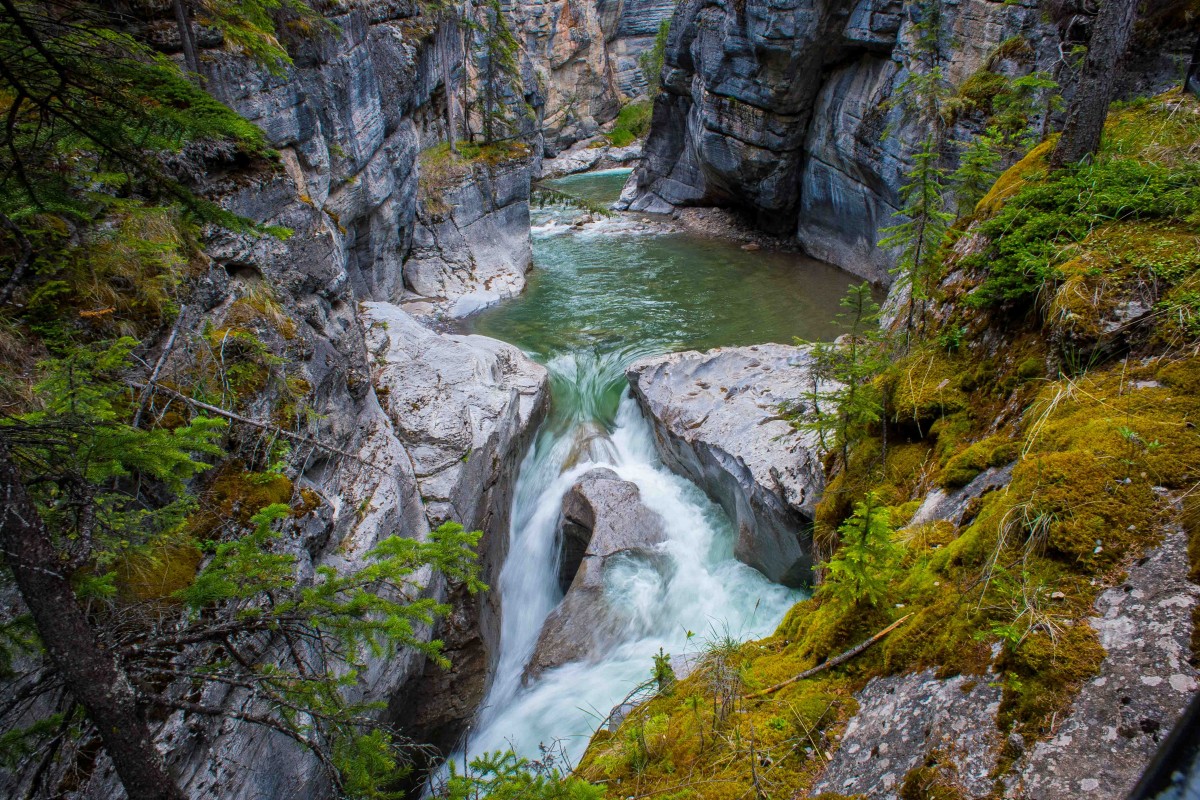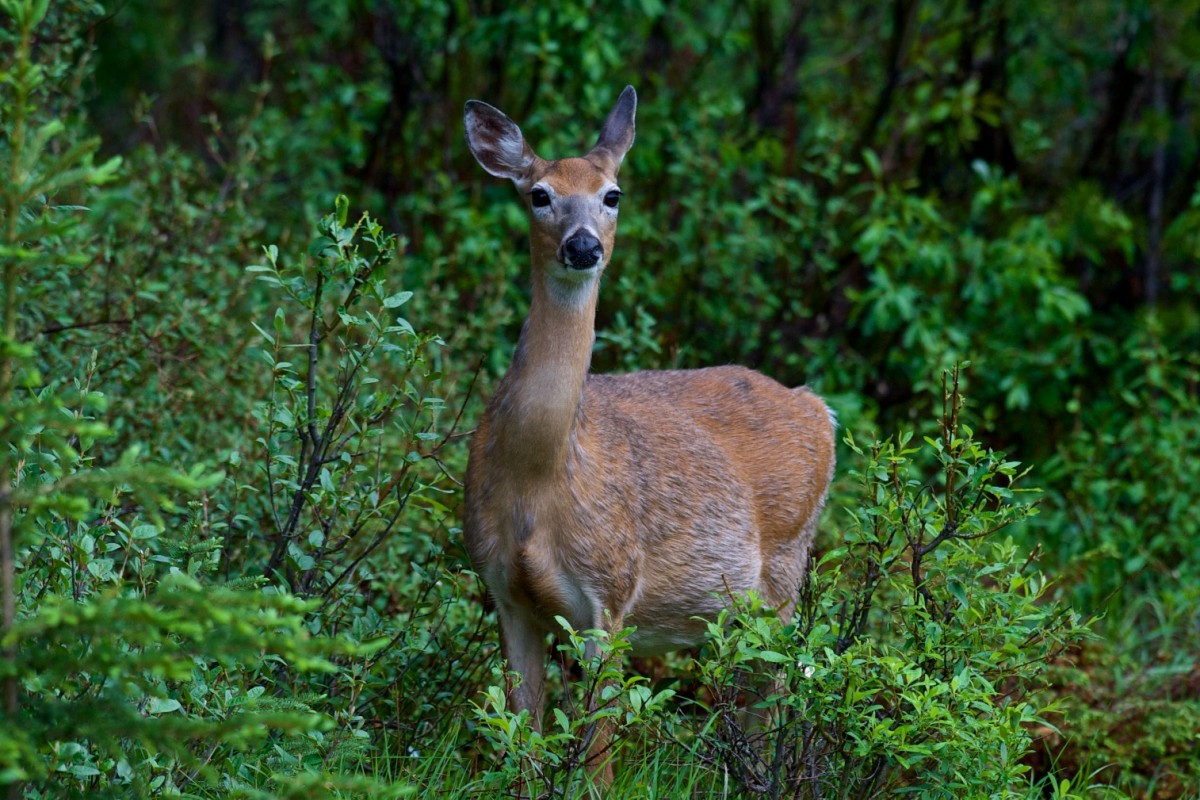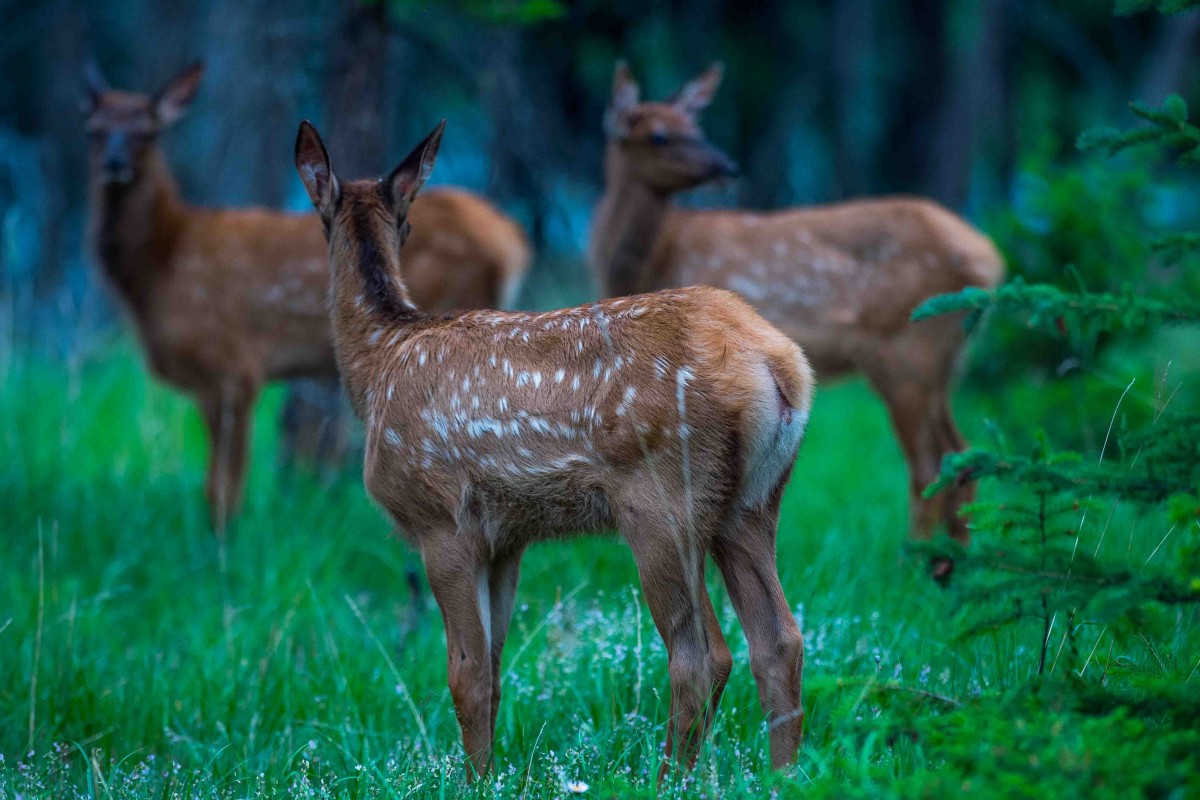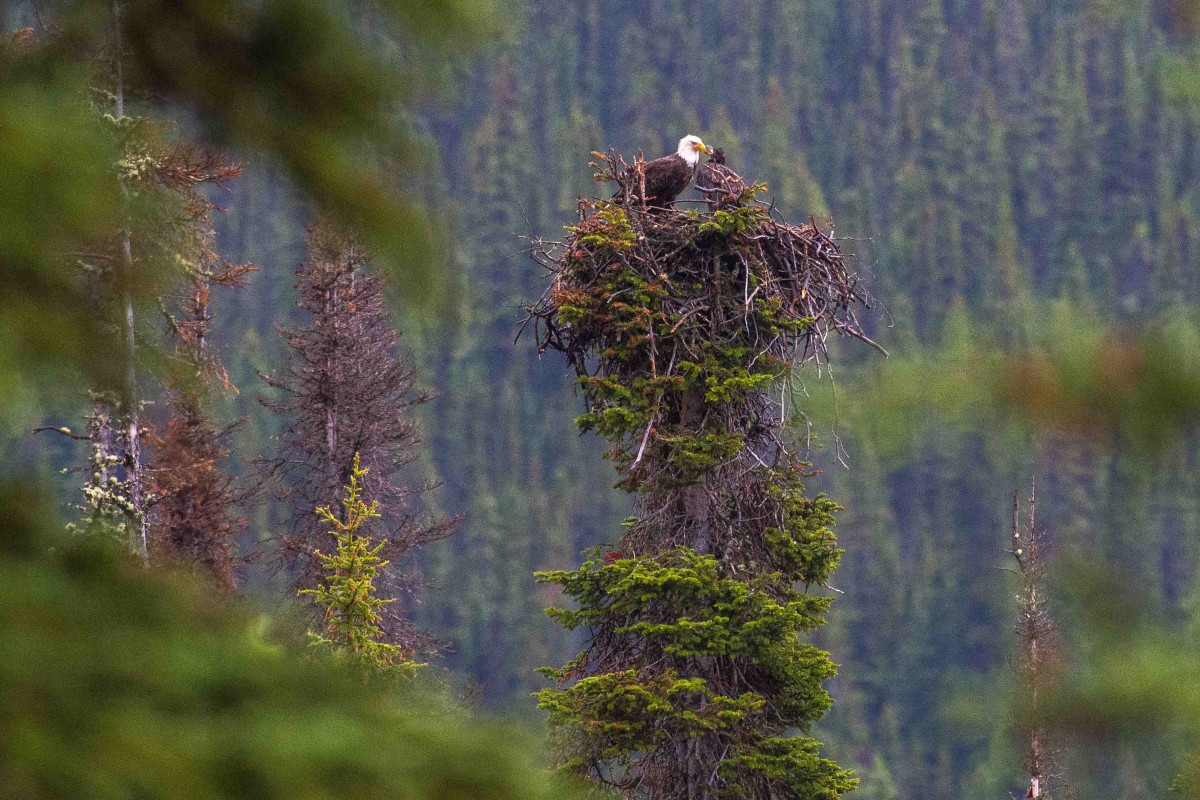When you’re preparing for a trip to a destination you’ve never been to, in a far away place on the other side of the world, you conjure up images of what you would like to see and do. These images are based on the hope that all the amazing things you’ve read and researched will actually be true and that you too will be lucky enough to experience these amazing sights and experiences for yourself. For me, this trip to Jasper, Alberta in Canada was an opportunity to see and photograph an abundance of exotic wildlife, such as we don’t see here in Australia, and to be wowed by beautiful landscape scenery. This image is one of those “hero” shots that I wanted to capture for myself (and did).
When I’m researching a new location, I usually start with a Google search titled “top tens things to see in…..” This educates me to the indigenous flora, fauna and sights, which I put on my preliminary to do/see list. High on my wildlife viewing list for this trip were bears, elk, moose, bighorn sheep, mountain goats, bald eagles and coyote. For scenery, I was keen to see Athabasca Falls, Mount Edith Cavell, Maligne Lake & Canyon and the quaint town of Jasper. These well known landmarks are all world acclaimed for their beauty.
Nestled in the midst of the Rocky Mountains in the Athabasca Valley on the Icefields Highway, 200 miles north of Calgary, Alberta, the population of Jasper is approx 4000 residents swelling to 30,000 during summer. This is because at that time of year Jaspers temperatures reach a pleasant maximum of 22 degrees and the days are long with sunset around 10:30pm allowing for long daylight hours to enjoy its beauty. In contrast, the winters are extremely cold with mean maximum temp’s of -10 degrees (yes minus) and an annual snowfall of over a metre falling from September to April.
As an avid wildlife photographer my research indicated that the Jasper district and environs are an unspoilt wildlife wilderness. Situated in the Jasper National Park, in the eastern half of the surrounding towering Rocky Mountains, this 10,000 square kilometre wildlife protectorate allows the animals to flourish in the natural splendour of the area. The wildlife is accessible and is not cloistered so high up or deep in the mountains as to be completely unviewable. In fact, most of my encounters with wildlife occurred casually driving on the roads in and around Jasper National Park. It was very exciting to come across big beasts on the side of the road or just meandering in the beautiful meadows lining the roads munching on abundant fruit, nuts and berries, the staple grazing foods that bear, elk, moose and deer enjoy. I was very excited and somewhat surprised to find that the local wildlife in fact hadn’t been pushed out of its indigenous habitat due to mans progressive encroachment, but as a result of Canada’s early realization of the importance of conservation and its direct relationship to local tourism, massive efforts have been taken by PARKS CANADA to develop a realistic synergy between wildlife and tourism. Wildlife is wisely seen as a tourist drawcard and every effort is being made to develop a harmonious juxtaposition between tourism and the safety and care of their native animals. Leveraging off both beautiful scenery and unique accessible wildlife, Canadian tourism wins big on both counts.
All the internet and Canadian tourist information I pre-read spoke to the fact that Jasper and its surrounds, in particular the 44 km Maligne Lake Road, was definitely one of the hot spots for wildlife and animals were so prolific that you’d likely come across them wandering on the side of the road. This was exciting news however I didn’t want to get my hopes up too much. Well, I’m happy to report, that TripAdvisor contributors and the Jasper Nat’l Park reviews weren’t wrong! Elk, moose, mountain goats, bighorn sheep, black bears, brown bears, muletail deer, coyote, chipmunks and Colombian squirrels were regularly sighted and there was plenty of fabulous close up opportunities for photography. The birding was significant as well. Bald Eagles, Canada Geese, White–capped sparrows, loons, and black-billed magpies to name just a few.
Not everyone gets excited by wildlife, but it was impossible not to be awed by the scenery. It is all around you. Mountains so close as to create shadows all day, peaks that just never lose their snow caps, glaciers that are tens of metres thick, and turquoise blue lakes shining for miles with endless acres of fir trees standing like silent sentinels all the way to the waters edge.
Our journey to Jasper started around 24 hrs after leaving Sydney. A little tired but nonetheless excited, we commenced our driving adventure, starting in Calgary, by heading out on the scenic Icefields Highway travelling north. Entering the Banff National Park we drove past the well known towns of Banff and Lake Louise (more on them in another news bulletin). Wildlife sightings started almost straight away with no less than three separate sightings of black bears along the highway on our first day. I should mention, that black bear, elk, bighorn sheep and moose spotting isn’t that hard. Just watch for all the cars, caravans and buses that have already stopped on the highway making any further progress up the road almost impossible (impassable), as the cars are usually parked at odd angles and people are milling about with cameras and binoculars. Just make sure you park carefully before you and your group hop out and join the gaper-block. There are also regulated minimum distances for approaching bears that must be adhered to for both your and the bears safety. In particular, if the bear has cubs, add more yardage to the safe distance recommendation.
In and around Jasper the local wildlife is so abundant that you can encounter them even on the grounds of your hotel. The locals tell stories of bears (both grizzly and black) coming into town and scavenging for food. Staying at the Jasper Wilderness Lodge, about 2 km outside of Jasper township, we were very fortunate one afternoon to meet a National Parks gamekeeper who kindly invited us to join him as he set about moving a herd of 20 or so adult female elk, with seven adolescent calves in tow. Although carrying a rifle, which he explained was his protection against wolves and aggressive bears, his “moving on” method to use on the recalcitrant elk was a large stick with long lengths of fluoro orange plastic strips to wave and rustle at them. Occasionally he said he was forced to use firecrackers, albeit rarely. This particular elk herd had ventured too close to the environs of the resort and people, and needed to be relocated. He informed us that within a kilometre of where we were standing, not only did this gang of elk live, but in the higher elevations of the surrounding Signal Mountains, a pack of wolves and a sleuth of bears ( yep really! that’s what they’re called) were in competition for supremacy.
On our second day in Jasper I came across my first serious and somewhat sobering wildlife encounter. This was one of those incidents that could have ended very badly, and made you realize that the warnings of authorities and travel publications are invaluable, if heeded. In fact, it made me think that I should be careful what I wished for….”
It started with a morning visit into Jasper village. Driving out of town, after a pleasant repast at a local bakery for morning tea, passing a wooded area less than half a kilometre from town I saw my first brown bear. He was slowly crossing a small timber bridge that led into a bushland walking track. Excited I hit the anchors and pulled over. Grabbing a fist full of camera I ran back to where I had last seen the bear. My recollection of this event may forever be clouded in a fog of fearful confusion, but this is what I recall. I was running to catch up to the bear whilst simultaneously casting fleeting glances down at my camera to quickly adjust rotary dial settings to ensure that I would capture a picture accurately should the opportunity present itself, when the bear and I rounded the corner on opposite sides of the small timber bridge simultaneously. We were on a collision course with each other! That’s me and a 5ft brown bear (who looked nearly as wide as he was tall) running headlong towards each other. Before colliding with each other we both pulled up to a stop! Let me assure you that every story you’ve ever heard about time seemingly going in slow motion when faced with danger is absolutely true. All the really useful information I had read about encounters with bears promptly exited through my shaking legs, and I am seriously happy to say that both of us were as surprised as each other. Ol’ jelly legs here backpedalled slowly away and I eventually put about 20 meters between him and I. He didn’t move towards me so I bravely popped off a couple of opportunistic shots on my backup move and continued walking backwards towards the opposite side of the road. Eventually (there is no way to say this in a way to save manly face) hiding behind a scrubby bush, I watched him “own” that bridge. In fact, the last image I took of him was the highest insult, him standing his ground and poking his tongue out at me. Not only that but he left a “parcel” on the bridge just to underscore the fact that it was his bridge and he could do whatever he liked in his territory. This was an encounter that will live with me forever!
Calmer and more serene activities I recommend in the Jasper National Park include a wander through the limestone Maligne Canyon. A picturesque and easy 2km round trip gentle hike, crossing bridges spanning deep narrow canyons with vortexes of turquoise coloured water rushing through the 25m high walls of the narrow limestone fissure canyons. This is called the “Walk of the 6 Bridges”.
This area is alive with chipmunks and squirrels. Bighorn sheep and black bears are also frequent visitors here. During winter these cascades freeze over, and tours are available allowing you to strap on ice cleats and walk through the deep ravines marvelling at the sheer cliffs that millennia of rushing water have carved out. Maligne Lake is recognized for its beauty and in particular the much photographed, Spirit Island. Hourly boat trips take sightseers on a round trip of the lake.
Taking a drive up Highway 16 north of Jasper you are treated to views of rich blue lakes, snow capped mountains, meadows and grasslands. About 10km out of town a beautiful dark tan, sleek skinned statuesque adult male elk sporting a massive rack of antler casually sauntered along the side of the road, stopping to eat choice leaves and berries in a meadow bordering the highway. After a successful, no rush, photographic stop with him we continued a few kilometres up the road coming across a group of halted cars. Turning our focus skyward we spotted a family unit of pure white, soft fluffy coated mountain goats climbing precariously on the edge of a steep hill. Showing off their fleet footedness on the extremely steep precipices, gasps could be heard from the assembled group of onlookers watching at the nimble balancing prowess that these beauties displayed in their precarious natural world.
Jasper, the town, is very quaint with an annual snowfall of over a metre and is surrounded by mountains, which are popular skiing destinations in winter.
Almost all the roads in and around Jasper feature rushing rivers and creeks running beside them with mineral infused water the colour of light turquoise. The meadows abound with one of the primary wildlife food source, which also is the state flower; the very pretty Wild Rose. With food and fresh water in plentiful supply its no wonder the wildlife is healthy and in abundance.
When you think glaciers its conjures up a mental image of super high elevation, impassable crevices, sheer precipices and temperatures too low to sustain human life. 14km out of Jasper, Mount Edith Cavell rises up and is an active glacier. However, on the day we climbed it we were in short sleeves. You see, even in summer it’s self sustaining as the freezing internal temps feed its own longevity during the relatively short warmer months. The Athabasca River is glacier fed from the Columbia Icefields glacier and continues for 1231km before emptying out of the McKenzie River system into the Arctic Ocean. Running parallel to this river is the Trans Canada railway crisscrossing some of the most picturesque and exciting visual panoramas. Close to Jasper are the magnificent Athabasca Falls. Standing 24m tall, it’s the power of these falls that makes them impressive. White water rafting is popular and starts below the falls and continues downstream on the Athabasca River.
The 7km long Medicine Lake to the east of Jasper is a predominately glacier fed lake, and is a fly fishermans paradise with plenty of rainbow and brook trout in the lake. Close to the lake an American Bald Eagle nest with mother feeding her fledgling was a real treat to witness.
The beautiful Fairmont Jasper Park Lodge is nestled on the shores of Lac Beauvert, in the heart of the Jasper National Park. Set on 700 acres, including the #1 Resort golf course in Canada, the resort features cedar log cabin chalets. Its so in keeping with the wilderness feel to be lodging in such charming accommodation with picturesque paths that wind and weave around the lake to the stone main lodge. Canoeing, golf, horseback riding and hiking are some of the summer activities on offer. Winter brings as much fun with skiing, snow-shoeing and, of course, ice skating on the lake is a must. These wonderful pastimes are made all that much more enjoyable when you are surrounded by pine woodlands, a crystal clear lake and snow capped mountains almost close enough to touch.





